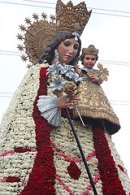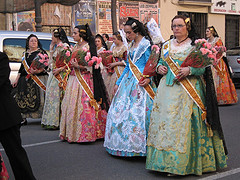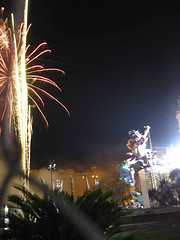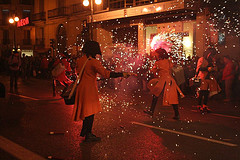
|
|
Origin/Origen; Ninots; The start of the festival/La Crida; Religious aspect/Religión en Las Fallas; Mascletas and fireworks/fuegos artificiales;
The destruction of the ninots/La destrucción de los ninots; Videos of/de La Crema; Fallas wordsearch/buscapalabras; Las Fallas quiz crossword/
crucigrama; Las Fallas jigsaw/rompecabezas; Las Fallas Links/Enlaces falleros;
LAS FALLAS DE VALENCIA
 |
 |
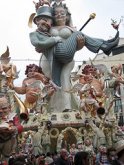 |
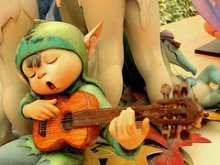 |
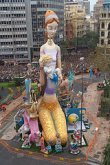 |
| THE NINOTS / LOS NINOTS | ||
The basis of the fiesta is the construction and subsequent destruction of the 'ninots', which are statues (made of cardboard, wood or cork and plaster) that are placed all over the city. The ninots are designed and built by neighborhood organizations and take about six months to create (the cost can range from 6000 to 600,000 euros). Some ninots exceed 20 metres and need to be moved into position with cranes. Through a display of art, irony and humour, the ninots are designed to satirize popular figures such as politicians and Spanish celebrities. |
La base de la fiesta es la construcción y la destrucción subsiguiente de los 'ninots' - estatuas (hechas de cartulina, madera o corcho y yeso) que se colocan en rincones por todas partes en la ciudad. Las organizaciones de barrio diseñan y crean los ninots y a veces llevan seis meses haciéndolo (y el costo puede variar de 6000 hasta 600,000 euros). Algunos ninots sobrepasan 20 metros de altura y se tiene que colocarlos con una grúa. Utilizando una mezcla de arte, ironía y humor, se designa los ninots con el propósito de satirizar personajes populares como políticos y famosos españoles. |
| THE START OF THE FESTIVAL - LA CRIDA - EL PRINCIPIO DE LA FIESTA |
The beginning of the festival is marked with La Crida, as crowds gather beneath the Serranos Towers. After an amazing display of fireworks, the 'Fallera Mayor' of Valencia invites everyone to enjoy the fiesta, extolling its excellent qualities. Two 'Falleras Mayores de Valencia' are elected each year (one adult and one child) as the queens of the festival, a coveted position among Valencian girls. Nowadays, the figure of the 'Falleras Mayores de Valencia' is not only important during Las Fallas, as they often appear at the most significant events that take place in the city throughout the year. |
Se señala el principio de la fiesta con La Crida, cuando las multitudes se congregan bajo de los Torres Serranos. Después de una exposición maravillosa de fuegos artificiales, La 'Fallera Mayor' de Valencia invita a todos a disfrutar de la fiesta, ensalzando sus calidades excelentes. Se elige dos 'Falleras Mayores de Valencia' cada año (una adulta y una niña) como las reinas de la fiesta, un papel codiciado entre las mujeres de Valencia. Actualmente, la figura de 'Las Falleras Mayores de Valencia' no sólo es importante durante Las Fallas porque también aparecen a las ocasiones más grandes durante todo el año. |
||
Proving that the festival has much more to offer than just the burning of the ninots, Valencia is alive with activity during the fiesta days: there are parades, bullfights, paella contests and beauty pageants. Artistic lighting displays run throughout Valencia, as every district is decorated with flamboyant lights in different shapes, colours and designs. |
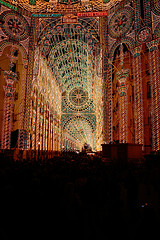 |
Demonstrando que la fiesta tiene mucho más que ofrecer que únicamente la quemadura de los ninots, Valencia se anima durante los días de fiesta: hay paradas, corridas de toros, concursos de cocinar paella y concursos de belleza. Se puede ver exposiciones artísticas de iluminaciones por todas partes porque se decora cada barrio con luces extravagantes en formas, colores y diseños distintos. |
| MASCLETAS AND FIREWORKS / MASCLETÁS Y FUEGOS ARTIFICIALES | ||
|
Spontaneous firework displays take place during the days leading up to 'La Crema' (the fiery end of the festival), but another important event to watch out for is the daily mascletá in the Plaza Ayuntamiento (Town Hall Square) at 2pm. During the mascletá, a huge pile of firecrackers is set on fire, which creates a concert of gunpowder. Lasting about six minutes, the display ends with an 'earthquake' as hundred of 'masclets' explode simultaneously. |
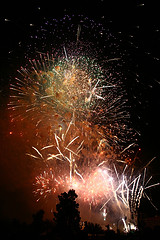 |
Fuegos artificiales espontáneos occuren durante los días que preceden a 'La Crema' (el final ardiente de la fiesta), pero otra ocasión que no se debe perder es la 'mascletá' cotidiana en la Plaza Ayuntamiento a las dos por la tarde. Durante la mascletá, se prende fuego a un montón de petardos, lo que crea un concierto de pólvora. Durante más o menos seis minutos, termina la exposición con un 'terremoto' cuando estallan cientos de 'masclets' a la vez. |
Despite the constant activity, the ninots remain the focus of the fiesta of fire. These sculptures stay in place until March 19th, 'La Crema'. In the early evening, men begin to chop holes into the statues and fill them with fireworks. The crowds chant, the streetlights are turned off, and all of the ninots are set on fire at midnight apart from one, as one ninot is saved every year through popular vote. This ninot is glorified on display at the permanent exhibition of 'ninots indultats' (saved ninots), in the Museo Fallero. |
A pesar de la actividad constante, los ninots siguen siendo el foco de la fiesta del fuego. Estas esculturas se quedan en su sitio hasta el 19 de marzo, 'La Crema'. Por la tarde, unos hombres empiezan a cortar las estatuas para hacer agujeros y así las rellenan con fuegos artificiales. Las multitudes gritan, se apaga las farolas y se prende fuego a todos los ninots a medianoche aparte de uno, porque se salva un ninot cada año por voto popular. Se glorifica este ninot en la exposición permanente de 'ninots indultats' -indultados - en el Museo Fallero. |
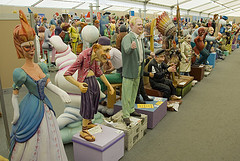 |
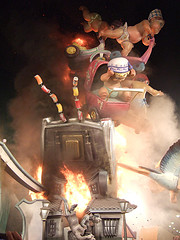 |
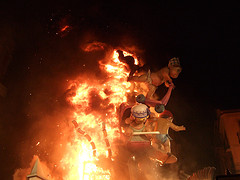 |
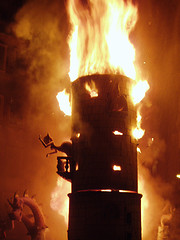 |
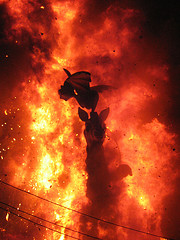 |
Whilst the frivolity and spectacular nature of the Crema are without question, the night also has an aspect of aspiration much like that of New Year's Eve. As the Crema ends, a new Fallas year begins, which one always hopes will be better than the last. |
Aunque la frivolidad y la espectacularidad de la Crema son evidentes, la noche también tiene un aspecto de aspiración como lo de Nochevieja. Cuando termina la Crema, empieza un nuevo año fallero, lo que siempre se espera que sea mejor que el año precedente. |
| VIDEOS OF LA CREMA / VIDEOS DE LA CREMA: | |
| LAS FALLAS QUIZ CROSSWORD / CRUCIGRAMA | ||
|
This interactive crossword puzzle requires JavaScript and a reasonably recent web browser, such as Internet Explorer 5.5
or later, Netscape 7, Mozilla, Firefox, or Safari. If you have disabled web page scripting, please re-enable it and refresh
the page. If this web page is saved to your computer, you may need to click the yellow Information Bar at the top of
the page to allow the puzzle to load.
|
Click here to see the answers / Pinchar aquí para ver las respuestas
Click here to download a printable version of this crossword / Pinchar aquí para obtener una versión que se puede imprimir de la crucigrama
| LAS FALLAS JIGSAW / ROMPECABEZAS |
FALLAS LINKS |
FIESTAS LINKS ON F-L-S |
||
|
|||
Copyright © and TM 2007-2024 fun-learning-spanish.com
